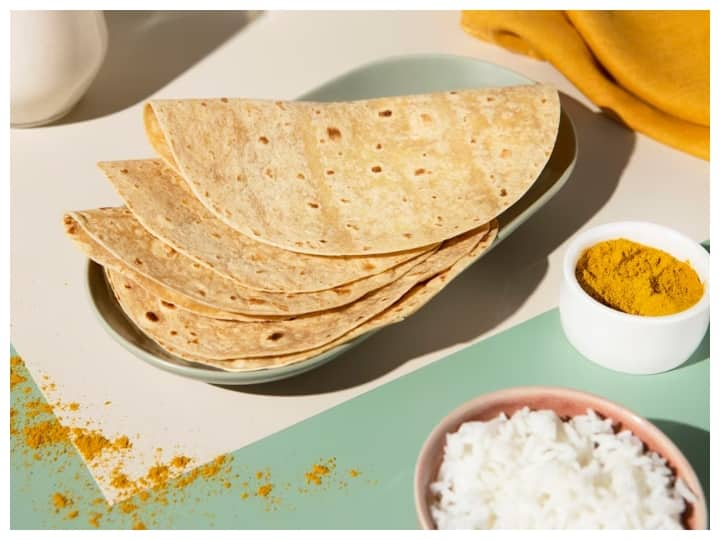We eat food everyday and on this basis we have divided the food into different categories. Like healthy foods and unhealthy foods, solid food and liquid food, fast digestible food and slow digestible food. Keeping this in mind, we plan our meals. One such most common food item is wheat bread.
It is a very important part of Indian food. We include it in our daily diet because by eating it our body gets nutrients and energy. But have you ever thought that how long does a roti take to digest in our stomach? Or how long does this roti remain in the stomach like this? This question must have come in the mind of many people. Let us know how much time it takes to digest roti.
What is roti?
Roti is an Indian dish eaten on a daily basis. Roti is eaten with other food if not with different vegetables. They are made from wheat flour and water, making thin round or oval shape by adding water to the flour. Then it is served by rolling and baking. There are many different types of roti, such as wheat chapatti, whole wheat chapatti, puffed chapatti, oven-baked chapatti and laccha paratha.
How long does it take to digest food?
The time taken to digest food depends on the type of food. According to WebMD, the process of digestion begins with chewing. It then releases acid and enzymes in your stomach to break down the food you eat. During this process, the blood flow increases so that all the cells of the body can be nourished. It takes about 24 hours for processed food to be eliminated from your body, which means that the healthier the food, the faster it will be digested. The time taken to digest is different in every person and it depends on his digestive system.
How long does roti take to digest?
Depending on the type of roti, the body can digest them in 1.5 hours to 2 hours. Some people may need up to 2.5 hours to digest roti depending on their unique digestive system. If you have eaten more and more bread, then you do not need to worry. A healthy digestive system can easily digest these flatbreads.
Is eating roti good for digestion or not?
Roti is an Indian flatbread made from ground wheat flour. Due to the presence of whole wheat flour in it, it is rich in fiber and “chokar”. Due to the high fiber in it, it can become a healthy option for people with digestion-related problems such as constipation, irritable bowel syndrome or diarrhea.
What could be the reason for roti not being digested?
If you have problem in digesting roti then it means you have carbohydrate intolerance. Carbohydrate intolerance occurs when the amount of an enzyme called amylase in the saliva and stomach is low. Because of this, some carbohydrates are not allowed to break down.
How can eating roti be beneficial for health?
As mentioned earlier, roti is a good source of fiber. Fiber helps your body in many ways, including lowering cholesterol and helping you feel fuller longer after meals. According to the Harvard School of Public Health, the average American receives only 15 grams of fiber each day, whereas they should be getting 25 to 30 grams of fiber per day. Fiber can also help in weight loss.
Carbohydrates are also found in abundance in roti. But the amount of protein, vitamins and minerals is less. Blood pressure can decrease rapidly by eating more carbohydrates. This can cause fatigue, dizziness, irritability changes. Long-term low blood pressure can lead to weight gain, diabetes, cancer, high cholesterol or heart problems. If you are eating roti in excess due to any reason, then it is advised that you eat roti with other foods. Also keep in mind that you keep eating healthy things like protein, fruits, vegetables.
Read also: Ayurvedic Disadvantage: Not only allopathy, excessive use of Ayurvedic medicines is also dangerous! These problems start happening
Check out below Health Tools-
Calculate Your Body Mass Index (BMI)




